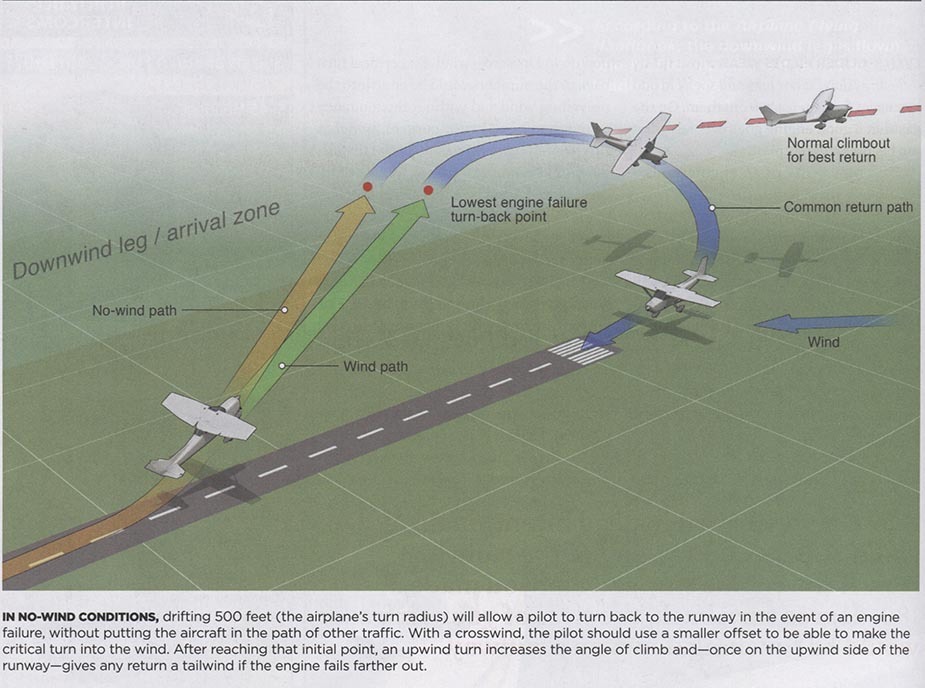On the subject I found this from 2016
and this from yesterday
I have just seen this in the US AOPA magazine

In essence, after liftoff, you turn away from the runway a bit, and then if the engine fails it is easier to make the runway.
What is the exact benefit, you get 210 degres total instead of 240 degres with the “impossible turn”? Be in position for a tailwind landing after that right turn?
By the way if you turn left on that diagram you only have 300-270 to get back into headwind landing…
Personally, bellow 1000ft agl will go straight ahead keep wing level without stalling it before it crashes (I have the insurer on speed dial after I walkout)
That’s all very well, but perhaps not as a hard rule. Landing within 30 degrees of “straight ahead” from 1,000 ft at Bute, for instance, will put a pilot in the seafaring business – albeit briefly.
With practice, most of our small aeroplanes can manage a glide ratio of at least 6:1 and a 180 degree gliding turn with height loss of less than 500 feet.
As for landing with some tailwind, it’s SOP for any sloping runway. Even without slope, and with 31” Bushwheels, I’d generally choose a flat grass, gravel or tarmac strip with some tailwind over a spruce forest or a loch or rough pasture or indeed any built environment.
All things considered, I think that AOPA diagram is worth practicing.
Funnily enough, I thought about that the other day, as this is exactly the flight path we have to fly for noise abatement reasons at KSMO, i.e., a slight southerly turn into the prevailing winds. I’d still prefer not having to try it….
172driver wrote:
I’d still prefer not having to try it….
Does anyone train such maneuvers (SEP engine failure after takeoff at low altitude) with an instructor? And trying to make the turn and see when/how it works?
Vladimir wrote:
Does anyone train such maneuvers (SEP engine failure after takeoff at low altitude) with an instructor? And trying to make the turn and see when/how it works?
Wouldn’t this be a bit like spin training where the training is more dangerous in terms of fatalities than the actual unforseen event?
Low level manoeuvring and EFATO are fraught with danger, not least startle effect, other departing traffic, etc. The standard take off brief of forced landing 45 degrees other side of the nose (30 degrees in some cases) is still correct. Most GA pilots are low on practice forced landing currency and do not find it easy to carry out a PFL at 1,800’ AGL over the runway, let alone so called ‘impossible turn’ manoeuvres – that’s why we carry hull insurance. A controlled crash at 30-40 mph is a much safer outcome, emphasis on controlled.
MedEwok wrote:
Wouldn’t this be a bit like spin training where the training is more dangerous in terms of fatalities than the actual unforseen event?
I don’t know. We practice engine failure immediately after takeoff in a MEP but of course only with an instructor who knows how far to go with the exercise.
Another video which is a good demonstration of the skilll needed to carry this out. Aircraft, the highly capable Carbon Cub, no startle effect, nice flat surrounding fields, some interesting comments on flying with the engine actually stopped.